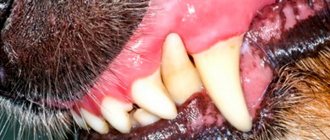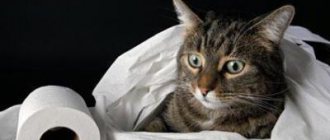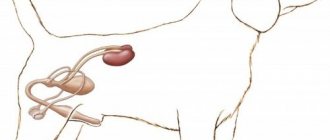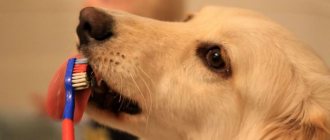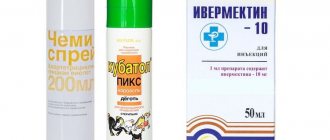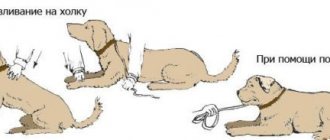What is tartar
Just like humans, dogs' teeth accumulate plaque over time. It is a soft growth consisting of food residues, saliva, polysaccharides and various bacteria. But over time, it hardens due to the minerals contained in saliva and turns into tartar. Typically, it consists of calcium phosphate and calcium carbonate, as well as organic matter and microorganisms.
What danger does dental plaque pose to animals?
Tartar tends to build up, so it gradually puts more and more pressure on the surrounding soft tissue. In addition, by pushing the gum away from the tooth, the growth can eventually reach the root, which will require serious intervention.
Possible complications of dental stones in dogs include:
- caries under a stone;
- stomatitis;
- gingivitis;
- tooth loss;
- malocclusion;
- sepsis;
- digestive problems;
- diseases of the gastrointestinal tract.
The constant release of toxins by multiplying bacteria leads to severe intoxication of the pet’s body. This, in turn, greatly weakens the immune system and promotes the addition of other infections. In especially severe cases, the matter may end in the death of the animal.
Tartar formation and consequences
Symptoms, types, consequences of tartar
The presence of tartar in dogs can be detected with the naked eye by examining the dog's mouth. If you notice yellowish deposits on your teeth and an unpleasant odor from your mouth, know that this is it. In advanced cases, the stone on the teeth becomes darker in color and increases in size. The dog may also notice reddening and bleeding of the gums, and the pet may be reluctant to eat food, especially solid food.
Depending on the location of the stone on the teeth, they are divided into supragingival and subgingival.
We can see supragingival stone when examining the oral cavity. It forms on the surface of the tooth and borders the gum. It looks like a rough gray or yellow or yellow-brown hard growth. Such a stone can damage the mucous membranes of the cheeks and lips, which can subsequently lead to their inflammation.
Subgingival stone is located under the gums, on the root of the tooth and can only slightly protrude onto the crown. It has a dark green color and is much harder than supragingival. If this stone is of significant size, then it detaches the edge of the gum from the tooth, causing gum inflammation. This can cause infections to penetrate inside the tooth.
Most often, these two types of tartar occur simultaneously. If the oral cavity is not sanitized in a timely manner, then for the most part this leads to severe inflammation of not only soft but also bone tissues, up to and including serious dental diseases.
Stone removal at home
If plaque is not too strong, you can remove it yourself at home, but only if your pet has been accustomed to brushing its teeth since puppyhood. It is necessary to choose a method of stone removal - mechanical or chemical. Mechanical is less expensive, but requires special tools and skill. The chemical method involves the use of veterinary products, which are not very cheap, but are safe and suitable even for novice dog breeders.
Mechanical method
You will need a scaler - a dental instrument made of surgical steel. It has a rounded blade at the end that is effective at removing light fossils. The scaler is disinfected before starting the process.
How to remove tartar from a dog using a scaler:
- Place the dog opposite you at a comfortable height. The animal should feel calm and comfortable.
- Wipe the scaler with alcohol and then sanitize your dog's mouth. To do this, use hydrogen peroxide.
- Start cleaning: gently, with slight pressure, remove plaque, moving from the gum to the tip of the tooth. Be careful not to damage your gums.
- During the entire process, talk to the dog and calm it down. If the animal is restless, ask household members to help you.
- If your dog doesn't have enough patience, divide the procedure into several sessions.
- After removing the stone, wipe your teeth and gum area with peroxide again. In case of careless cleaning and wounds on the gums, use Lugol.
If you do not want to injure the animal and are not confident in your skills, then it is best to turn to professionals.
Chemical method using
Modern veterinary medicine is rich in various means that make caring for pets easier. Some drugs are sold freely and do not require a veterinarian's prescription - you just need to read the instructions and choose the most suitable option.
Elixir
You need to take the solution, soak a gauze pad with it and apply it to the dog’s tooth. Usually you need to keep the elixir in one place for several minutes. When the procedure is complete, wipe the area with a clean cloth or bandage. Xident and its analogues are considered a good remedy.
Gels
Gel preparations do not need to be kept on the surface of the tooth - this makes the process of removing stone easier. A small amount of the substance is applied to the desired area. Active elements mix with saliva and enter hard-to-reach areas. After the time specified in the instructions has passed, you can easily remove deposits using the usual mechanical means or using a stiff toothbrush. The Tropiclean line has proven itself well - the products are available not only in the form of gels, but also in the form of rinses for daily use.
Sprays
The spray is easily and evenly applied to the surface of the teeth. The substance will have a disintegrating effect for about an hour. During this period, the dog should not be allowed near food and water. After completing the procedure, it is necessary to mechanically brush your pet’s teeth.
It is impossible to say exactly how often cleaning should be done. This process will be individual for each individual. The regularity of cleaning is affected by food, breed, age, and other characteristics. As a general guideline, veterinarians recommend getting checked by a dentist at least once a year. The owner can clean soft plaque on his own; more complex cases are left to specialists.
Causes
In the wild, the ancestors of our four-legged friends cleaned their teeth naturally by chewing on the bones of their prey. A domestic dog that eats soft food does not need to chew solid food and does not undergo mechanical cleaning of its teeth, which increases the risk of tartar formation.
Oral hygiene, or rather the lack thereof, is of great importance. It is extremely important to use preventatives even if your dog is eating solid (dry) food.
There is also a genetic predisposition to the development of tartar. In small dogs and brachycephalics, diseases of the oral cavity are much more common, this is due to the proximity of the teeth to each other.
Risk group:
- dwarf and small dog breeds;
- brachycephals;
- dogs whose diet mainly consists of soft food;
- dogs over 3 years old.
Reasons for education
Various reasons can stimulate the formation of tartar.
Metabolic disorders
Sometimes, due to insufficient activity, hypothermia and other reasons, the water-salt balance in the body is disturbed. Some experts consider it a stimulant of plaque formation.
Poor nutrition
The nature of a dog, as a predator, is to eat solid food in pieces and chew it. At home, four-legged pets are often fed soft food or canned food that does not require chewing. This leads to a lack of natural friction between the teeth, and plaque appears, which will later become stone.
Frequent eating of sweets speeds up the stone formation process. A dog's teeth are not brushed as often as a person's, so sugars remain on them, alkalize the environment in the oral cavity, and contribute to the formation of stones.
Violation of the structure of teeth
If an animal has abnormalities in the structure of the jaw, crooked teeth, or an incorrect bite, then this leads to problems with digestion, and subsequently to stone formation.
Failure to comply with hygiene rules
You should always monitor the condition of your dog's oral cavity. Brush your teeth regularly using a special paste and brush. If this is not done, the plaque will constantly accumulate and harden, forming stones.
Almost any dog can develop tartar, but older individuals are more susceptible to it, as well as decorative breeds with small mouths and small spaces between the teeth (Chihuahua, miniature poodle, Maltese, toy terrier and others).
Treatment
It is impossible to remove tartar at home. The procedure for removing tartar is carried out only in a veterinary clinic under general anesthesia. Anesthesia is necessary for a thorough examination and cleaning of teeth, and no dog will allow any manipulation in its mouth.
In veterinary dentistry, two methods are used to remove tartar in dogs: mechanical and ultrasonic.
Mechanical removal
It is carried out with special dental instruments. This method has several disadvantages - the possibility of damage to the gums and teeth when pressing hard on the instrument, as well as the inability to remove plaque.
Ultrasound method
It is more popular, effective and painless. This procedure is carried out using a special apparatus - a scaler. Due to ultrasound, tartar is destroyed and peeled off from the tooth. The only drawback of this method is the difficulty of removing subgingival stone.
Which method of removing tartar is better?
It is impossible to say unequivocally which method of removing deposits from a dog’s teeth is better. Each of them has pros and cons. Thus, the price of mechanical cleaning at home and even in a clinic will be much lower than an ultrasound procedure. However, such removal spoils the enamel, which can subsequently lead to the development of caries and other pathological processes.
Today, most experts recommend ultrasonic removal of dental plaque. Among its advantages:
- minimal risk of tissue trauma;
- no pain;
- high efficiency;
- requires less time.
The only disadvantage of ultrasound is its relatively high cost.
Tartar preparations
Today, the pet products market offers a huge range of various products for the prevention of tartar from Russian and foreign manufacturers.
Toothpastes and gels are used both for cleaning teeth and for simple treatment by applying to the gums. They effectively remove plaque, perfectly freshen breath and prevent the formation of dental growths. Medicines are available in pet stores. Toothbrushes are used together with gel or paste.
Sprays and drops are not only effective means, but also the most convenient to use.
You can also prevent the formation of tartar with the help of special food and treats. Dry food for oral hygiene is part of the line of medicinal dietary foods; they are produced by the world's largest brands, such as Royal Canin and Hill's. And tasty dental sticks or bones will serve as a prevention of dental problems and as leisure for your pet.
Tooth paste from the Danish company Globalvet
Removes bad odor from the mouth, removes plaque, and prevents the formation of caries and tartar. Available in 50 ml volume. A small amount of paste is applied to a special toothbrush or finger and carefully, lifting the pet’s lip, I begin to brush the teeth. Due to the fact that the paste has an attractive taste, brushing your teeth will not be difficult.
American toothpaste “Toothpaste For Dogs” brand 8 in 1
It is an excellent tool for maintaining healthy teeth and gums and removing unpleasant odor from the mouth. It is used in the same way as the first paste. Available in a weight of 92 g.
Italian gel “Stomadin”
They are used not only to prevent the formation of tartar, but also to treat various diseases of the oral cavity. It is applied between the gums and lips. After application, massage the area for a few seconds. The procedure is carried out up to two times a day. Available in 30 ml volume.
Russian gel “Strong teeth”
Available in 25 ml volume. Contains exclusively natural ingredients. The drug is used to prevent the formation of tartar and eliminate unpleasant odor from the mouth. It is an aid in the treatment of oral diseases. The drug is applied to the gums several times a day for one week.
Russian product “Zubastic Gel” from Api - San
Produced in a volume of 30 ml. Normalizes pH and improves metabolism in the oral cavity, reduces the risk of tartar. The drug is applied to the gums 3-5 drops, then rubbed. The procedure is carried out several times a day for one to two weeks.
Beaphar brand double toothbrush
Flexible and soft bristles allow you to safely brush your pet's teeth. Suitable for dogs of all sizes. Costs about 300 rubles.
Japanese toothbrush from Earth Pet Co.
It looks like a fingertip. This shape of the brush allows you to control the degree of impact on the teeth and gums during brushing.
Chinese toothbrush
It has two sides, one for cleaning teeth and the other for massaging gums.
Dutch spray “Fresh Breath Spray” from the famous brand Beaphar
Kills bacteria, freshens breath and, with regular use, prevents the formation of dental growths. Like other sprays, it is very easy to use. You just need to lift your dog's lips and spray the spray onto the gums. It is advisable to use after each feeding. Available in a volume of 150 ml. The cost is about 900 rubles.
Russian sprays “Zubastic Spray” and “Strong Teeth”
They have anti-inflammatory, antibacterial, anesthetic effects. They freshen breath and prevent the formation of plaque and tartar. Zubastic is available in a volume of 30g, Strong teeth - 75 ml.
Fresh Breath Drops from the American company TropiClean
You just need to add a few drops to a bowl of water and your pet will be provided with fresh breath and healthy teeth. Available in a volume of 52 ml.
Royal Canin Dental special veterinary line food
Designed for oral hygiene in dogs. The special shape of the croquette, when chewed, can prevent the appearance of plaque. Suitable for dogs from 6 months of age of all breeds. Hill's t/d Dental Care special diet food
Also provides reliable protection and health of the oral cavity. Corvettes are relatively large in size (about the size of a matchbox), so your pet will chew it. This will not help avoid the appearance of tartar, but also improve digestion. This food should not be fed to puppies or pregnant dogs.
Pro Plan Dental Pro Bar
These are a kind of treats that serve to prevent the formation of tartar. Pro Plan makes this product for medium and large breed dogs and for toy dogs. The package contains 5 spiral-shaped sticks. The cost is about 300 rubles.
Dr Alders Dent Snex bones made from beef skin and tripe
Manufactured in Germany by Dr. Alder's
A wonderful natural treat that will clean your dog's teeth. The package contains 2 seeds with a total weight of 140 g.
Bone Toothpicks are manufactured in China and sold under the brand Country Delicacies.
The treat is sold for one bone each for small, medium and large dogs.
Prevention of tartar formation in dogs
Cleaning your dog's teeth at home
You can prevent the formation of tartar in your four-legged friend by following certain rules.
- Bones must be included in the animal's food. It is important that they are beef, but not splintered (so-called moss), preferably containing cartilage tissue.
- You should avoid feeding your dog sweet treats, overly nutritious formulas, or canned foods.
- It is worth monitoring the condition of your pet’s gastrointestinal tract.
- From puppyhood, you need to use a special brush and toothpaste to clean your dog’s teeth.
- Periodically wipe your pet's teeth with a piece of gauze soaked in a soda solution.
- Visit a veterinarian once every six months for examination and sanitation of the oral cavity.
Such measures are quite enough to ensure that your four-legged friend’s smile is always perfect and his teeth are healthy.
Prevention
“Brushing a dog’s teeth, how stupid,” many of you will think. However, observing just such a basic rule of hygiene can prevent most problems associated with the oral cavity, and in particular tartar.
Veterinary dentists recommend brushing your teeth every day after every meal. But few people will have this opportunity, so you should perform this procedure at least 3 times a week.
Brush your pet's teeth with special gels and a toothbrush and toothpaste. Toothpaste for animals and for people are completely different products, so it is strictly not recommended to use your own toothpaste on your pet.
A good and simple preventive measure would be a spray and treats in the form of sticks or bones, which also eliminate bad odor from the mouth and prevent the appearance of stone and plaque.
Popular questions
How to clean your dog's teeth from tartar?
Dogs need to brush their teeth from the age of one, but they are accustomed to this procedure from childhood. To do this, the puppy is introduced to the brush. First, they let him smell it, then they begin to brush their teeth, moving it in a circular motion along the gums. The procedure time may initially be a couple of seconds, but then it needs to be gradually increased. You can smear a treat on the brush to create a pleasant association for your puppy and help him get used to brushing his teeth faster.
How much does it cost to remove tartar from a dog?
On average, ultrasonic teeth cleaning will cost about 2,000 rubles. The larger the dog, the more expensive the cost will be. This is related to the amount of anesthesia that will need to be administered to your pet.
When is the best time to contact a veterinarian?
Although there are enough products on sale to rid your dog of tartar, in case of large deposits, and also for the first time, it is better to consult a veterinarian. Removing stones on your own risks infection entering the tooth cavity (especially in the presence of a carious process), damage to the gums, and inflammation of the soft tissues and oral cavity. In addition, the animal may suddenly jerk and get injured. And finally, the specialist will not only properly clean your pet’s teeth, but will also carry out sanitation, ensure that the results are consolidated, and give recommendations for further care.
